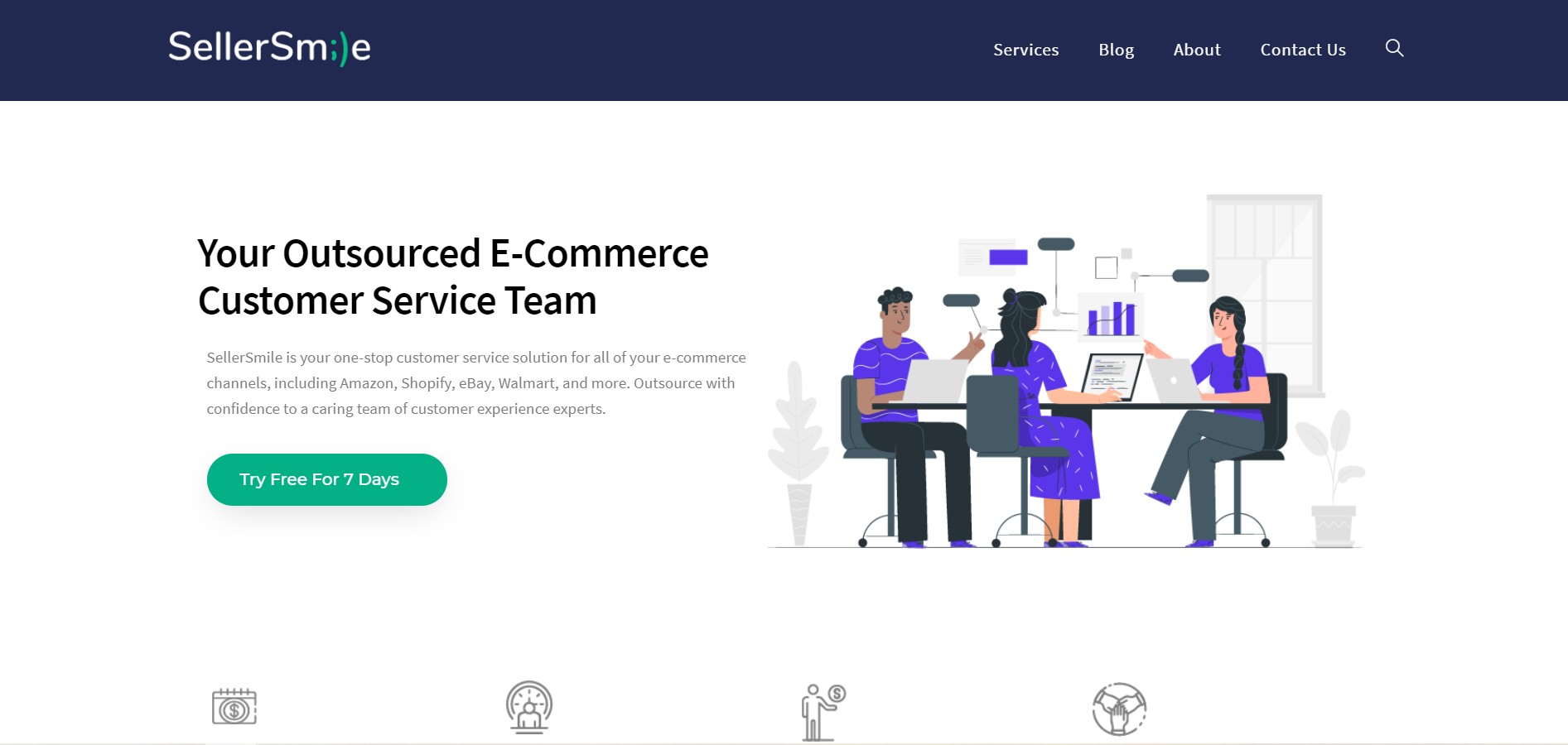Customer service is essential for any business. Great service keeps customers happy and loyal.
Shopify, a leading e-commerce platform, offers excellent customer service to its users. Running an online store can be challenging. When problems arise, quick and efficient support is crucial. Shopify understands this need and provides multiple ways to help its users.
Whether you are new to e-commerce or an experienced merchant, Shopify’s customer service can guide you. From troubleshooting technical issues to offering business advice, their support team is ready to assist. This blog will explore the various aspects of Shopify customer service. We will look at the different support channels and how to make the most of them. Let’s dive in and see how Shopify ensures your store runs smoothly.

Credit: www.providesupport.com
Introduction To Shopify Customer Service
Shopify has become a popular e-commerce platform. Its success is partly due to excellent customer service. Many online businesses use Shopify to sell products. Good customer service helps them stay successful. This section will explore the importance of Shopify customer service. We will also look at its role in e-commerce success.
Importance Of Customer Service
Customer service is crucial for any business. Happy customers are more likely to return. They also tell others about their positive experiences. This helps to attract new customers. Customer service can make or break a business. It is the key to keeping clients satisfied.
Shopify understands this. They offer multiple support options. These include:
- Email support
- Phone support
- Live chat
- Help Center articles
These resources help businesses solve problems quickly. Quick solutions build trust. Trust leads to customer loyalty.
Role In E-commerce Success
In e-commerce, customer service plays a vital role. Online shoppers expect quick responses. They also want easy solutions. Shopify’s customer service meets these needs. This makes it easier for businesses to succeed.
Shopify offers:
- 24/7 support
- Detailed help articles
- Community forums
These features ensure that businesses get help anytime. This support helps businesses run smoothly. It also improves the shopping experience for customers.
In summary, customer service is essential for success. Shopify’s customer service is a key factor. It helps businesses grow and keep customers happy.
Setting Up Customer Support
Setting up customer support on Shopify is essential for a smooth business operation. A good support system improves customer satisfaction and trust. This guide will help you establish effective customer support on Shopify.
Choosing Support Channels
First, identify the support channels best suited for your business. Different channels serve different purposes and audiences. Consider the following options:
- Email Support: Ideal for handling detailed queries. Allows for structured responses.
- Live Chat: Provides instant assistance. Enhances customer satisfaction with quick responses.
- Phone Support: Best for resolving complex issues. Adds a personal touch.
- Social Media: Engages with customers where they are active. Great for public interactions.
- Help Center: Offers self-service solutions. Reduces the volume of support tickets.
Choose the channels that align with your business size and customer preferences.
Integrating With Shopify
Integrating support channels with Shopify ensures seamless operations. Here are steps to integrate popular support tools:
- Email Support: Use Shopify’s built-in email forwarding. Forward support emails to your preferred email client.
- Live Chat: Install chat apps from the Shopify App Store. Popular choices include Tidio, Zendesk, and LiveChat.
- Phone Support: Use apps like Aircall or RingCentral. These apps provide call management and integration features.
- Social Media: Integrate social media platforms with Shopify. Use apps like Facebook Messenger or Re:amaze.
- Help Center: Create a comprehensive FAQ section. Use apps like HelpCenter or Easy FAQ.
Integration helps in managing all support interactions from a single platform. It saves time and improves efficiency.
Creating A Help Center
Creating a Help Center for your Shopify store is essential for providing exceptional customer service. A well-organized help center can greatly reduce support requests. It also empowers customers to find solutions on their own. Here are some key components to include in your Shopify help center.
Faqs And Knowledge Base
A comprehensive FAQs section addresses common questions and concerns. This helps in reducing the number of support tickets. Here are some tips for creating effective FAQs:
- Identify the most common questions.
- Provide clear and concise answers.
- Organize FAQs by category.
- Update FAQs regularly.
A Knowledge Base is equally important. It offers detailed guides and articles. This helps customers understand your products and services better. Consider these points for a great knowledge base:
- Create tutorials and how-to guides.
- Include step-by-step instructions.
- Use screenshots and videos for clarity.
- Ensure content is easy to navigate.
Live Chat And Contact Forms
Offering Live Chat is crucial for real-time support. It allows customers to get instant help. This improves their overall experience. Here are some benefits of live chat:
| Benefit | Description |
|---|---|
| Instant Support | Customers get quick answers to their queries. |
| Higher Satisfaction | Immediate responses improve customer satisfaction. |
Besides live chat, Contact Forms are essential. They allow customers to submit their queries anytime. Make sure your contact forms are easy to use. Here are some tips:
- Keep the form simple.
- Ask for necessary information only.
- Provide a confirmation message.
By integrating these components, you can create an effective help center. This enhances your Shopify customer service significantly.

Credit: socialhead.io
Utilizing Shopify Support Apps
Shopify offers excellent customer service. But sometimes, you need extra help. That’s where Shopify support apps come in. These apps can enhance your customer service. They offer features that make managing your store easier. Let’s explore how to utilize these apps effectively.
Top Recommended Apps
Several Shopify support apps stand out. One popular app is Gorgias. It centralizes customer support in one place. Another great app is Reamaze. It integrates live chat, FAQs, and social media. HelpCenter is also a good choice. It allows easy FAQ creation and management. These apps can improve your customer service experience.
Installation And Configuration
Installing these apps is simple. First, go to the Shopify App Store. Search for the app you want. Click “Add app” to begin installation. Follow the on-screen instructions. After installation, configure the app. Each app has its own settings. Adjust them to fit your needs. Make sure to test the app. This ensures it works correctly. Finally, train your team. They need to know how to use the app. Proper training leads to better customer service.
Training Your Support Team
Customer service is key for any successful Shopify store. Training your support team ensures they can handle any situation. A well-trained team improves customer satisfaction and loyalty. This section will focus on the essential skills and ongoing training programs needed for your support team.
Essential Skills
Support team members need several key skills. These include:
- Communication: Clear and concise communication helps resolve issues quickly.
- Empathy: Understanding customer feelings builds trust and rapport.
- Product Knowledge: Team members must know your products inside out.
- Problem-Solving: Creative solutions keep customers happy.
- Patience: Some issues take time to resolve. Patience is vital.
Ongoing Training Programs
Training should not stop after the initial onboarding. Ongoing training programs keep your team updated. Consider these approaches:
- Regular Workshops: Monthly or quarterly workshops refresh and update skills.
- Role-Playing Exercises: Simulate real customer interactions to practice responses.
- Feedback Sessions: Regular feedback helps team members improve.
- Online Courses: Use online platforms for continuous learning.
- Shadowing Experienced Staff: New hires can learn by observing seasoned team members.
A combination of these methods ensures a well-rounded training program. This keeps your support team effective and efficient. Consistent training leads to higher customer satisfaction and repeat business.
Managing Customer Inquiries
Managing customer inquiries is crucial for your Shopify store’s success. Effective management ensures customer satisfaction and loyalty. Responding promptly and professionally to inquiries builds trust. This section will cover efficient response strategies and handling difficult customers.
Efficient Response Strategies
Efficient responses can make or break customer relationships. Quick replies show customers you value their time. Use tools like Shopify’s built-in messaging system. Automated responses can handle common questions. This frees up time for more complex issues.
Personalize each response. Customers appreciate when you use their name. Tailored replies feel more genuine. Keep your tone friendly and professional. Be clear and concise. Avoid jargon. Customers prefer simple language. Address their concerns directly. This builds trust and satisfaction.
Handling Difficult Customers
Difficult customers are part of any business. Stay calm and listen actively. Let them express their frustrations. Show empathy in your responses. Acknowledge their feelings. Offer solutions, not excuses. This can defuse tension.
Set clear boundaries. Be firm but polite. If a situation escalates, involve a supervisor. Document all interactions for future reference. This helps in maintaining records and resolving disputes. Always aim to turn a negative experience into a positive one. A satisfied customer may return and recommend your store.
Automating Customer Service
Automating customer service can save time and reduce costs for your Shopify store. It helps in providing quick responses to common questions. This also ensures that customers receive consistent support. Here are some ways to automate your customer service effectively.
Using Chatbots
Chatbots can handle many customer inquiries without human intervention. They can answer frequently asked questions, provide order status, and assist with product information. This reduces the workload on your support team and improves response times.
Here is a list of tasks chatbots can perform:
- Answer common questions
- Provide shipping information
- Offer product recommendations
- Assist with returns and exchanges
Using chatbots helps in providing 24/7 support, which can improve customer satisfaction.
Automated Email Responses
Automated email responses are another effective way to manage customer inquiries. You can set up email templates to respond to common questions. This ensures that customers receive timely and accurate information.
Below is a table showing different types of automated email responses and their purposes:
| Email Type | Purpose |
|---|---|
| Order Confirmation | Confirming the receipt of the order |
| Shipping Notification | Informing customers about the shipping status |
| Support Ticket Acknowledgement | Letting customers know their request is being processed |
| Feedback Request | Asking customers for feedback on their purchase |
Setting up these automated emails can ensure that your customers are always informed about their orders and inquiries.
Personalizing Customer Interactions
Personalizing customer interactions can make a big difference in customer satisfaction. When customers feel valued, they are more likely to return. Shopify provides several ways to achieve this through personalized responses.
Using Customer Data
Using customer data is key to personalizing interactions. Shopify collects a lot of customer information. This includes:
- Purchase history
- Browsing behavior
- Customer preferences
Accessing this data helps you understand your customers better. You can tailor your responses to their needs and interests.
| Data Type | Usage |
|---|---|
| Purchase History | Suggest related products |
| Browsing Behavior | Offer special deals |
| Customer Preferences | Provide customized recommendations |
Creating Personalized Responses
Creating personalized responses goes beyond using names. It involves addressing specific needs and preferences. Here are some tips:
- Use their name: Always start with the customer’s name.
- Reference past interactions: Mention their previous purchases or queries.
- Offer tailored solutions: Suggest products or services based on their history.
Here’s a sample personalized response:
Hi [Customer Name],
I noticed you recently purchased [Product]. We have a new accessory that complements it perfectly.
Let me know if you have any questions!
Best,
[Your Name]
Such responses show that you value their business. It enhances their shopping experience and builds loyalty.
Monitoring Customer Feedback
Monitoring customer feedback is vital for any Shopify business. It helps understand what customers think about your products and services. This feedback can guide improvements and enhance customer satisfaction.
Businesses can collect feedback through various methods. They can use surveys, reviews, or direct communication.
Collecting Feedback
Collecting feedback is the first step in understanding customer opinions. Shopify offers multiple tools to gather feedback. You can use email surveys to ask customers about their experience. Another method is to encourage product reviews on your site. Direct communication through chat support can also provide valuable insights.
Make feedback collection easy for customers. A simple survey form can increase the response rate. Ensure all feedback channels are accessible and visible.
Analyzing Customer Insights
After collecting feedback, the next step is analyzing it. Look for common themes in customer comments. Identify areas where customers are happy or dissatisfied. Use these insights to make informed decisions.
Use analytics tools to categorize feedback. This helps in understanding patterns and trends. Regularly review feedback to keep track of changes in customer opinions.
Analyzing feedback allows you to pinpoint specific issues. Address these issues to improve your Shopify store’s performance.
Improving Response Times
Improving response times in Shopify customer service is essential for enhancing customer satisfaction. Customers expect quick responses to their inquiries. Faster responses can lead to better customer experiences. This, in turn, can increase loyalty. Here’s how to improve response times effectively.
Setting Response Time Goals
Set clear response time goals for your team. Define how quickly you want to respond to customer queries. These goals should be realistic and achievable. For example, aim to respond within 24 hours. Regularly review and adjust these goals as needed. This ensures continuous improvement in response times.
Using Tools For Efficiency
Use tools to streamline your customer service process. Customer relationship management (CRM) software can help manage inquiries. Automation tools can handle common questions. This allows your team to focus on more complex issues. Implementing live chat can also reduce response times. These tools can make your customer service more efficient.
Leveraging Social Media
Leveraging social media for Shopify customer service is a smart strategy. It helps businesses connect with customers in real-time. Social media platforms are where your customers already spend their time. Using these channels can improve customer satisfaction and loyalty.
Social Media Support
Providing support through social media is effective. It is quick and accessible. Customers can reach out on platforms like Facebook, Twitter, and Instagram. Responding promptly builds trust and shows you care. Use direct messages for personal issues. Public posts can address common questions. Always keep your tone friendly and professional.
Brand Reputation Management
Managing your brand’s reputation on social media is crucial. Monitor comments and reviews about your brand. Respond to negative feedback quickly. Offer solutions to resolve issues. Positive interactions can turn unhappy customers into loyal ones. Consistent engagement builds a strong online presence. It shows you value customer opinions and feedback.
| Platform | Best Use |
|---|---|
| Customer inquiries, community building | |
| Quick responses, real-time updates | |
| Visual content, brand stories |
- Quick Responses: Reply to customer queries within an hour.
- Consistent Tone: Maintain a friendly and professional tone.
- Monitor Feedback: Keep track of mentions and reviews.
- Engage Regularly: Post updates and respond to comments.
- Set up social media profiles for support.
- Train staff to handle social media inquiries.
- Use tools to monitor brand mentions.
- Create a response template for common issues.
Integrating social media with Shopify customer service enhances the customer experience. It makes your brand more approachable. Customers appreciate quick and effective communication. This builds trust and loyalty over time.
Handling Returns And Refunds
Handling returns and refunds is crucial for maintaining customer satisfaction in any e-commerce business. A smooth process can turn a disappointed customer into a loyal one. Let’s explore how to create a clear policy and manage customer expectations effectively.
Creating A Clear Policy
A clear return and refund policy helps customers understand their options. This builds trust and reduces confusion.
Key Elements to Include:
- Return window: Specify how many days customers have to return items.
- Condition of items: Clarify if items must be unused or in original packaging.
- Refund method: State if refunds are given as store credit or back to the original payment method.
- Shipping costs: Explain who covers the cost of return shipping.
Here’s an example of a simple return policy:
Return Policy:
- Items must be returned within 30 days of receipt.
- Items must be unused and in original packaging.
- Refunds will be issued to the original payment method.
- Customer is responsible for return shipping costs.
Managing Customer Expectations
Managing expectations is vital to avoid misunderstandings and complaints. Clear communication can help achieve this.
Steps to Manage Expectations:
- Provide detailed product descriptions and images.
- Offer size guides or fitting tips for clothing.
- Set realistic delivery times and update customers on delays.
- Send confirmation emails with return instructions after purchase.
Use a FAQ section to address common concerns. This can reduce the number of customer service inquiries.
Sample FAQ:
| Question | Answer |
|---|---|
| How do I return an item? | Contact our support team for return instructions. |
| How long does a refund take? | Refunds are processed within 5-7 business days. |
| Can I exchange an item? | We currently do not offer exchanges. |
By creating a clear policy and managing expectations, you can handle returns and refunds smoothly. This leads to higher customer satisfaction and loyalty.
Building Customer Loyalty
Building customer loyalty is essential for any online business. Loyal customers are more likely to return, make repeat purchases, and recommend your store to others. Shopify customer service plays a crucial role in nurturing this loyalty. By implementing effective strategies, your business can create a loyal customer base that drives long-term success.
Loyalty Programs
Loyalty programs reward customers for their repeat business. They can include points systems, discounts, or exclusive offers. Shopify offers various apps to create and manage loyalty programs. These programs encourage customers to return and make more purchases. They also make customers feel valued and appreciated.
Customer Retention Strategies
Effective customer retention strategies keep customers coming back. Personalized emails, special discounts, and excellent customer service all help. Shopify provides tools to track customer behavior and tailor marketing efforts. Responding quickly to customer inquiries and resolving issues also builds trust.
Using feedback to improve products and services shows customers you care. Regularly updating your store with new products keeps customers interested. Engaging with customers on social media also strengthens relationships. By focusing on retention, your business can thrive.

Credit: bsscommerce.com
Measuring Customer Service Performance
Measuring customer service performance in Shopify is crucial. It helps identify areas of improvement and enhances customer satisfaction. In this section, we’ll explore key performance indicators and tools for tracking success.
Key Performance Indicators
Key performance indicators (KPIs) are essential metrics. They help measure the effectiveness of customer service. Common KPIs include:
- First Response Time: The time taken to respond to a customer query.
- Resolution Time: The duration to resolve a customer’s issue.
- Customer Satisfaction Score (CSAT): A metric that tracks customer happiness.
- Net Promoter Score (NPS): Measures customer loyalty and likelihood of recommendations.
- Ticket Volume: The number of customer service requests received.
Tracking these KPIs helps in understanding performance trends. It also assists in making informed decisions for improvements.
Tools For Tracking Success
Several tools can help track customer service performance on Shopify. These tools offer insights and analytics. Some popular options include:
- Shopify’s Native Analytics: Provides basic metrics and reports.
- Zendesk: A comprehensive tool for managing customer service interactions.
- Freshdesk: Another robust platform for customer support and ticketing.
- Gorgias: Tailored for Shopify, it integrates seamlessly with the platform.
- LiveChat: Offers real-time chat support and analytics features.
Using these tools, businesses can track their KPIs effectively. They provide valuable data to enhance customer service strategies.
Case Studies Of Successful Shopify Stores
Discover the secrets behind successful Shopify stores. Learn how they achieve exceptional customer service and build loyal customer bases. We will delve into real-life case studies and explore key lessons. These insights will help enhance your own Shopify store.
Examples Of Excellent Customer Service
Effective customer service can make or break a Shopify store. Let’s look at some real-world examples of stores that excel in this area.
| Store Name | Customer Service Practices | Results |
|---|---|---|
| Store A |
|
|
| Store B |
|
|
Lessons Learned
From these case studies, several key lessons emerge. These lessons can help improve your Shopify store’s customer service.
- Always be accessible: Offering 24/7 support can significantly enhance the customer experience.
- Personalization matters: Personalized emails and messages create a connection with customers.
- Clear policies: An easy return policy can build trust and encourage purchases.
- Proactivity pays: Addressing issues before they escalate can prevent negative experiences.
- Detailed information: Providing comprehensive product details can reduce customer inquiries and returns.
Implementing these strategies can lead to happier customers and a more successful Shopify store.
Future Trends In E-commerce Customer Service
The future of e-commerce customer service is evolving rapidly. With new technologies, businesses can serve their customers better. Shopify, a leading e-commerce platform, is at the forefront of this transformation. Let’s explore some key trends shaping the future of customer service in e-commerce.
Ai And Machine Learning
AI and machine learning are becoming crucial in customer service. These technologies help in understanding customer behavior. They provide personalized support and quick solutions. AI can answer common questions instantly. This reduces waiting time for customers. Machine learning improves over time. It learns from past interactions. This makes future support even better.
Omnichannel Support
Omnichannel support is essential for modern e-commerce. Customers use different platforms to reach businesses. They might start a conversation on social media. Then continue it via email. Shopify ensures a seamless experience across all channels. This approach keeps the customer journey smooth. It also provides consistent support. Customers appreciate this convenience. They feel valued and understood.
Frequently Asked Questions
What Is Shopify Customer Service?
Shopify customer service assists users with their Shopify-related issues. They provide support through live chat, email, and phone.
How To Contact Shopify Support?
You can contact Shopify support via live chat, email, or phone. Visit the Shopify Help Center for more details.
Is Shopify Customer Service Available 24/7?
Yes, Shopify customer service is available 24/7. You can reach them anytime for assistance.
What Issues Can Shopify Customer Service Help With?
Shopify customer service can help with store setup, technical issues, billing, and more. They provide comprehensive support.
Conclusion
Shopify customer service provides reliable support for your e-commerce needs. Their team is responsive and knowledgeable, assisting with various issues. Whether you need help with setup, troubleshooting, or general inquiries, Shopify’s support ensures smooth operations. This support can make a significant difference in managing your online store.
By leveraging their customer service, you can focus more on growing your business. Trust in Shopify’s dedicated team to aid you efficiently. Make the most of their expertise and keep your store running seamlessly.








